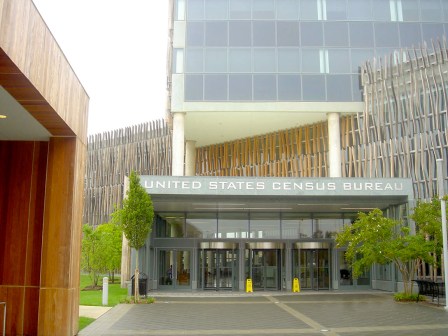- Sponsored
- Modernization
Using outcomes-based RFPs to modernize IT infrastructure faster

Zain Ahmed is regional vice president for Lumen’s federal business; Walter Maikish is vice president for Federal Civilian business at Cisco.

Walter Maikish, VP, Federal Civilian Business, Cisco and Zain Ahmed, Regional VP, Federal Business, Lumen
The pandemic and almost overnight massive shift to telework forced federal agencies and IT leaders to make their digital services more accessible to their employees and constituents. They rallied, met their mission and discovered that the need to modernize their IT infrastructure and get the most from cloud-based solutions had become more important than ever before.
Fortunately, the General Services Administration’s Enterprise Infrastructure Solutions (EIS) contract gives agencies a once-in-a-generation opportunity to modernize as they see fit. EIS and the Alliant 2 Government Wide Acquisition Contract (GWAC) provide not only a path to migrate away from aging telecommunication systems to today’s technologies, but also paved the way for building a more modern, flexible and cost-effective IT and communications environment overall.
However, some agencies are still missing a critical opportunity to capitalize on EIS’s potential.
It’s probably not surprising that the demands of the pandemic delayed the work of agencies moving their IT services to EIS. But we didn’t expect to see so many requests for proposals (RFP) focused on replacing “like-for-like” IT infrastructure instead of seeking a more holistic review of their infrastructure centered on improved efficiency and effectiveness. As a result, many of these RFPs left little room to consult with industry providers on all the technology options that are available in the market, what these technologies can now do today and how they can lower overall costs.
What these RFPs also tend to miss is an even bigger opportunity to envision IT infrastructure from an outcomes-based perspective focused on big picture modernization strategies. At the end of the day, the goal is to bring greater agility, efficiency, security and long-term cost savings to agencies’ ability to meet their mission.
Focusing on outcomes rather than technology
We are seeing some great examples of agencies seeking to really modernize their IT infrastructure at agencies such as Veterans Affairs and the U.S. Geological Survey, for example.
When a large, cabinet-level agency decided to update their IT infrastructure, for instance, they prioritized objectives in their RFP that outlined outcomes for their mission, rather than prescribing specific hardware or technologies to acquire.
That holistic approach created an opening for Cisco and Lumen to bring our combined expertise to the table and reimagine the large, cabinet-level agency’s network in a way that brings significantly more value to how they work than would have been possible with a like-for-like update of the older telecommunications systems acquired under the previous Networx contract.
Using the outcomes-based approach, we were able to propose an SD-WAN roadmap that provides more robust automation, network orchestration and secure capabilities than most existing networks. These modern solutions can help ensure that applications perform faster and make digital interactions more secure, especially with data being stored at the edge of the network for quicker access in places such as national parks. And even though this large, cabinet-level agency operates in many remote locations, our solution provided substantial network upgrades to those locations and to their users and visitors who previously didn’t have access to reliable internet access.
The Department of Veterans Affairs, similarly, took a more forward-looking approach to modernizing its infrastructure and broadband capacity, and as a result, was able to dramatically scale up its use of tele-health services for the benefit of veterans as well as its medical teams.
The promise of outcomes-driven RFPs
As agency leaders consider the rapid evolution of technology, it’s easier than ever before to see additional benefits arising from an outcome-driven approach.
For example, when an industry partner promises to deliver on mission outcomes, rather than simply deliver a requested technology platform, the agency benefits from being able to transfer a certain amount of risk to their partner. That in turn incentivizes that partner to recommend technologies that are in the agency’s best interest long term.
It’s from that perspective that we recommend agency leaders consider re-evaluating how they frame their RFPs, starting with:
- Consider how infrastructure serves the mission: IT infrastructure is no longer a back-end function of service delivery. Rather, it is the backbone and serves as the nervous system for how agencies meet their mission goals. Leaders need to frame RFPs to focus on outcomes from a mission perspective and then work backwards in defining their IT needs. And leaders would be better served if they didn’t focus so much on their old assets or history.
- Think about the roadmap to get there: Rather than be prescriptive — which is how many RFPs tend to be written — agencies should think about specific mission outcomes to achieve and define what success looks like in serving their agency’s end users and bureaus.
- Choose a partner who is in it for the long run: An industry partner shouldn’t just continue to build and add more things. Rather choose one which is committed to your agency’s mission outcomes and that can advise your management team about new IT capabilities coming into the market that can improve mission results.
And finally, it is important to remember that RFPs are just one milestone in an ongoing IT modernization journey. So don’t stop there. Keep your foot on the accelerator in modernizing your IT infrastructure and look for ways to support continual improvements that serve the agency, serve the citizen and serve stakeholders.
Learn more about what your agency needs to get up to speed on EIS, Alliant 2 and other contract vehicles that enable IT modernization and how Lumen and Cisco can help you get there.





